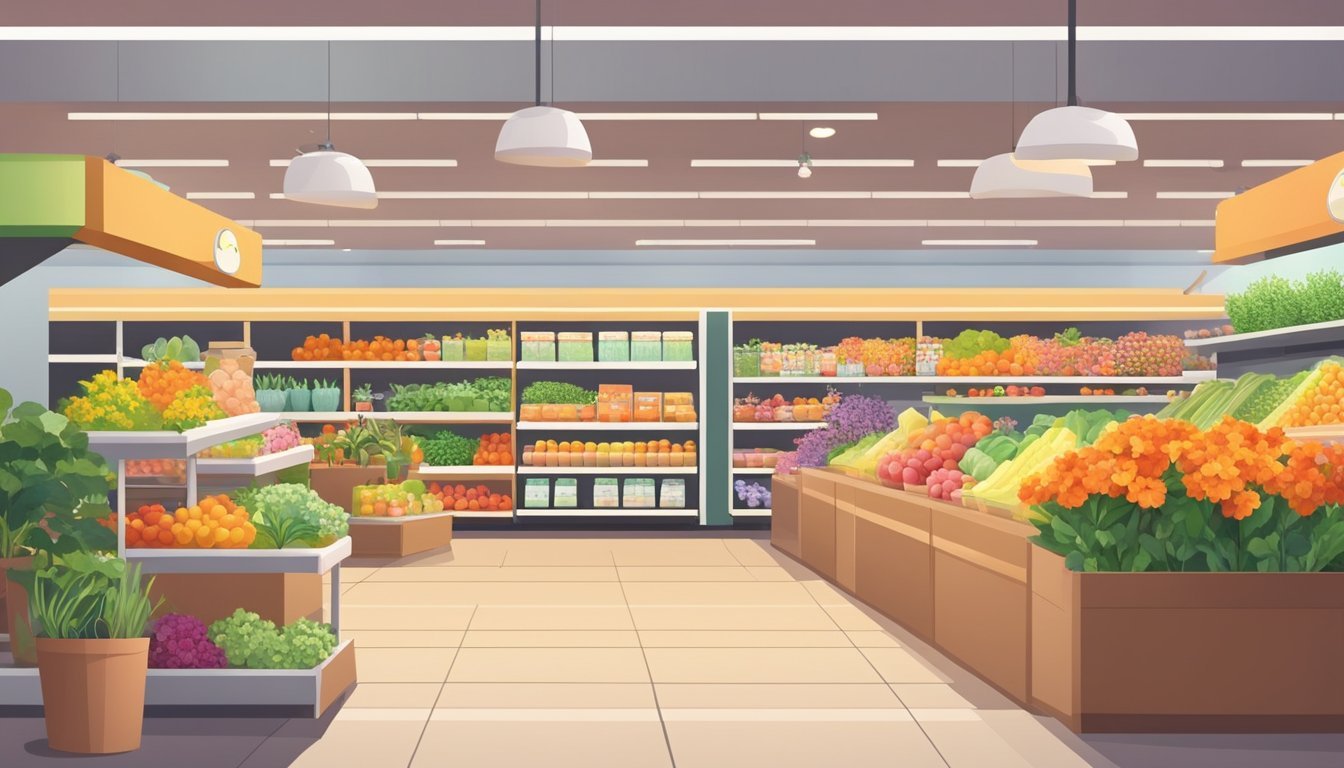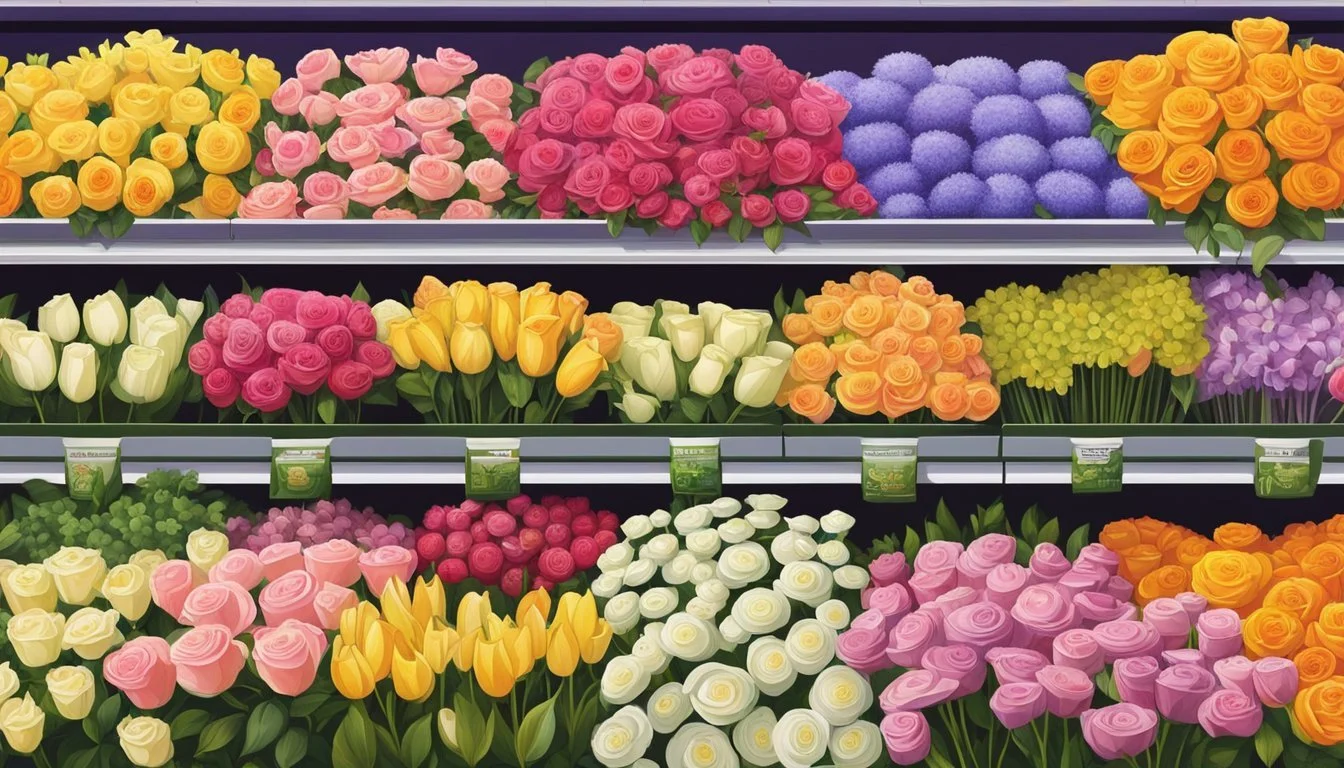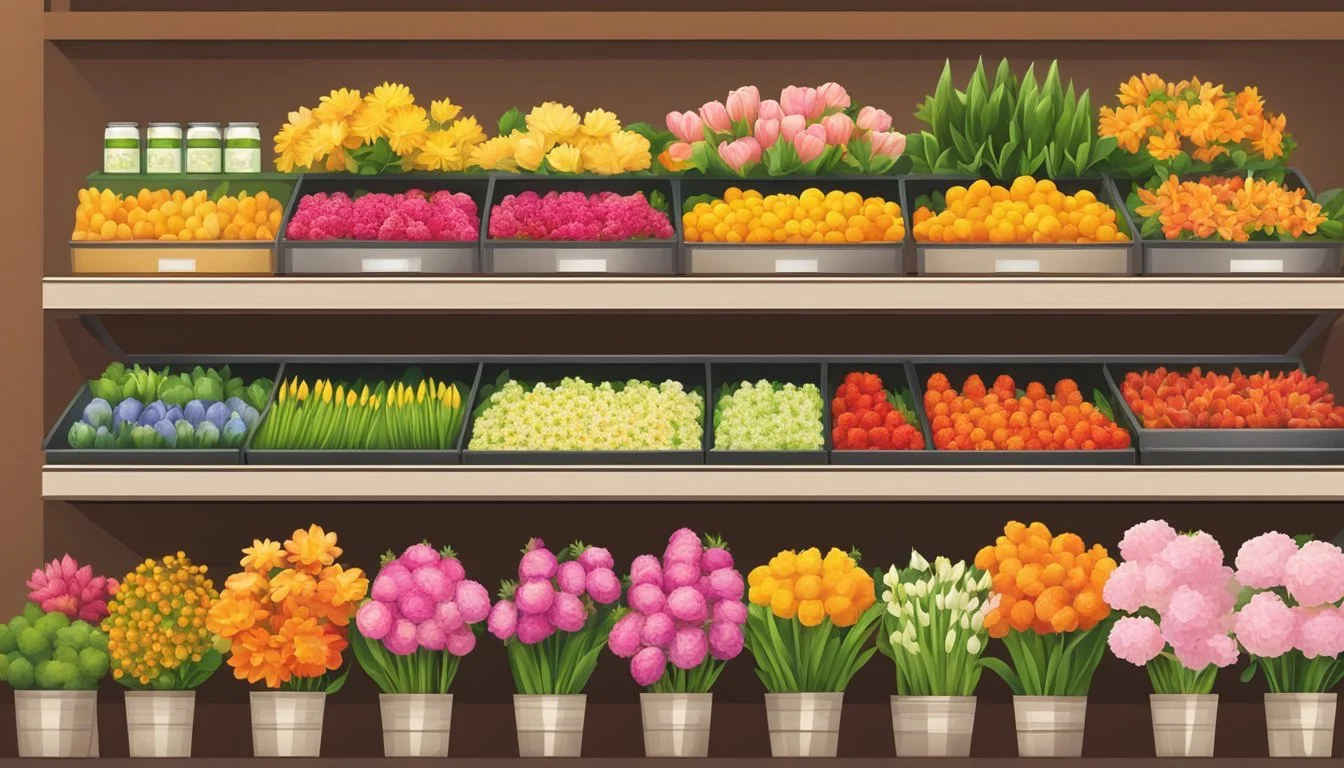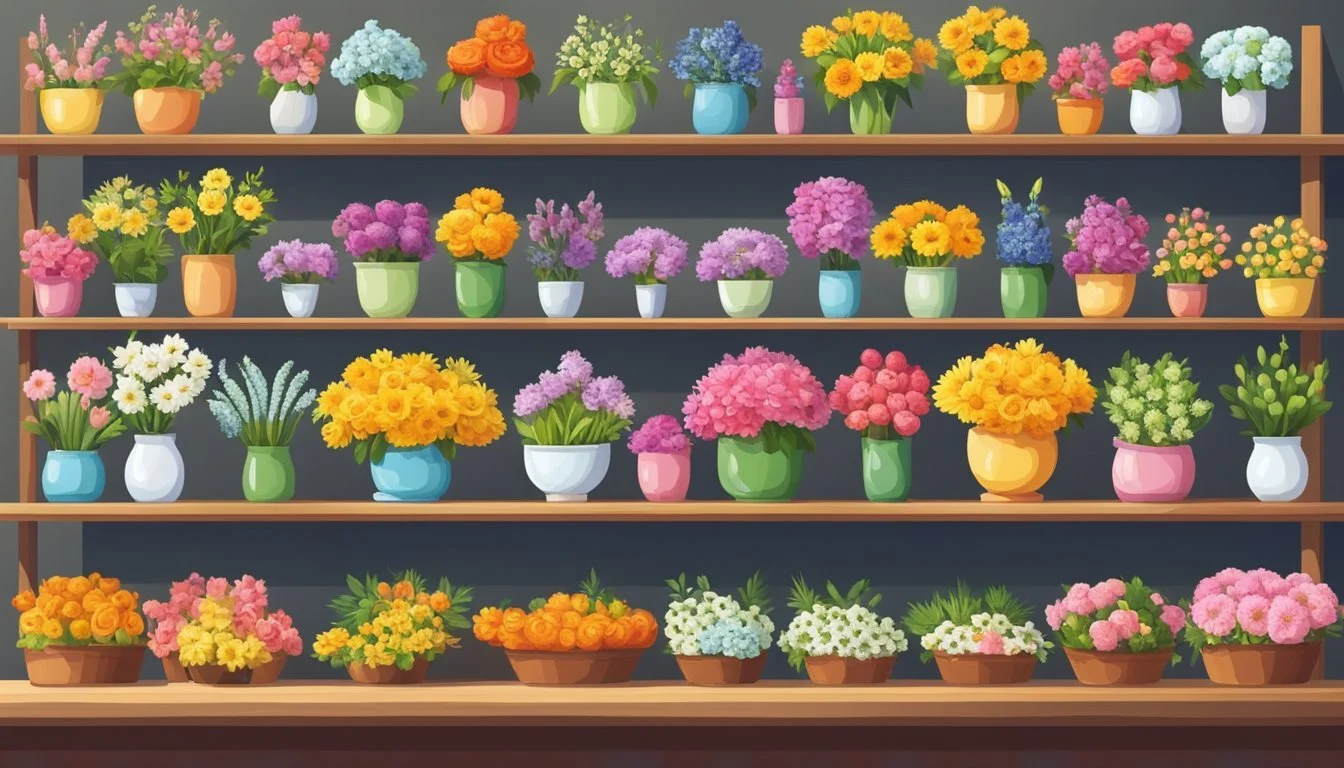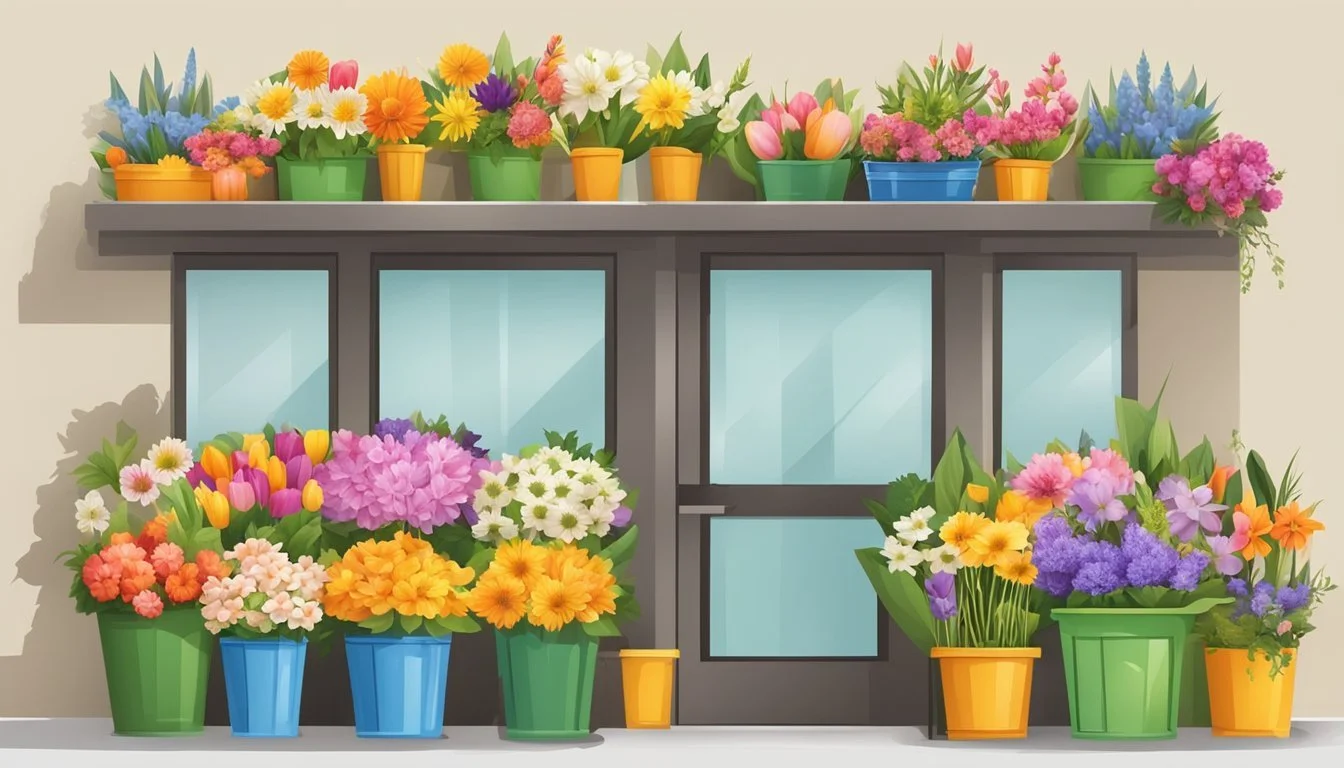Blooming Bargains: Finding the Best Grocery Stores for Fresh Flowers
Grocery stores offer a convenient and often affordable option for purchasing fresh flowers. Many supermarkets now feature dedicated floral departments with a wide selection of blooms and arrangements. From simple bouquets to more elaborate displays, these stores cater to various tastes and budgets.
When it comes to the best grocery store for buying flowers, Trader Joe's consistently ranks high among consumers and florists alike. Their floral offerings are known for quality, variety, and competitive pricing. However, other chains like Whole Foods Market and Costco also receive praise for their flower selections and value.
The key to finding great grocery store flowers lies in choosing the freshest blooms available. Look for tight buds that haven't fully opened yet, as these will last longer. Avoid flowers with browning edges or wilted petals. With proper care and selection, grocery store flowers can provide a beautiful and cost-effective way to brighten up any space.
Choosing the Right Grocery Store
Selecting the ideal grocery store for flower purchases involves considering several key factors. These include the store's commitment to quality, variety of floral options, and overall layout that enhances the shopping experience.
Quality and Freshness Standards
Grocery stores with high-quality flower selections prioritize freshness. They often receive frequent shipments and maintain proper storage conditions. Look for stores that keep flowers in cooled areas or water-filled buckets.
Inspect flowers closely before buying. Fresh stems should be firm and free from slime. Avoid blooms that are fully open or have wilting petals. Some stores, like Whole Foods Market, are known for stringent quality control.
Stores that train their staff in proper flower care typically offer better products. These employees can assist customers in selecting the freshest bouquets and provide care tips.
Selection of Flowers
A diverse floral selection indicates a store's dedication to meeting various customer needs. Top grocery stores offer a mix of popular blooms and unique varieties.
Look for stores carrying:
Classic roses in multiple colors
Seasonal flowers like tulips or sunflowers
Long-lasting options such as alstroemeria and carnations
Greenery for filler and texture
Some chains, like Trader Joe's, are known for affordable and varied floral options. Others may specialize in locally sourced or exotic blooms.
Importance of Store Layout
An well-designed floral department enhances the shopping experience. Stores with dedicated flower sections make it easier to browse and compare options.
Good lighting is crucial for assessing flower quality and color. Stores that position flowers near natural light sources or use specialized lighting often present their blooms more attractively.
Space for custom bouquet creation is a plus. Some supermarkets offer wrapping stations or floral designers for personalized arrangements.
Placement near the entrance can indicate a store's pride in their floral offerings. This location also ensures flowers aren't forgotten during the shopping trip.
Types of Flowers Available
Grocery stores offer a diverse selection of flowers to suit various tastes and occasions. From classic favorites to seasonal specialties, the options cater to both everyday shoppers and those seeking unique blooms.
Seasonal Varieties
Spring brings tulips, daffodils, and hyacinths to grocery store shelves. These cheerful blooms add color and freshness to any space. Summer offerings often include sunflowers, dahlias, and zinnias, perfect for bright bouquets.
Fall showcases chrysanthemums and asters in warm autumnal hues. Winter selections feature poinsettias, amaryllis, and holiday-themed arrangements. Many stores also stock year-round favorites like roses, carnations, and lilies.
Grocery chains adjust their floral inventory to match the changing seasons, ensuring customers always have access to timely and appropriate options for their needs.
Exotic and Everyday Options
Grocery stores typically carry a mix of familiar and exotic flowers. Roses remain a popular choice, available in various colors and stem lengths. Carnations offer affordability and longevity, making them ideal for budget-conscious shoppers.
For those seeking something more unique, many stores stock orchids, birds of paradise, and proteas. Alstroemeria, known for its long vase life, is another common option. Some locations even offer peonies and ranunculus when in season.
Eucalyptus, though not a flower, is often available as a complementary green for arrangements. Its versatility and pleasant aroma make it a popular addition to bouquets.
Potted Plants and Succulents
Beyond cut flowers, grocery stores frequently offer a selection of potted plants and succulents. These living gifts provide longer-lasting enjoyment and can be an excellent value for customers.
Popular potted options include orchids, peace lilies, and small flowering plants like African violets or kalanchoes. Many stores also stock an assortment of succulents, which are low-maintenance and trendy.
Seasonal potted plants, such as Easter lilies in spring or poinsettias during the winter holidays, are often prominently displayed. Some locations even carry small herb plants or miniature rose bushes, perfect for those looking to start a windowsill garden.
Understanding Flower Freshness
Fresh flowers enhance any space with their beauty and fragrance. Selecting the best blooms requires knowing what to look for and how to assess their condition.
Signs of Fresh, Quality Flowers
Fresh flowers have vibrant, firm petals without discoloration or wilting. The stems should be green, sturdy, and free from slime or mold. Examine the buds - tight, unopened buds often indicate longer-lasting flowers.
Check the water in pre-made bouquets. Clear water suggests freshness, while cloudy water may signal older blooms. Fragrant flowers should have a pleasant, natural scent.
Avoid flowers with browning edges, drooping heads, or shedding petals. These are signs of age and will likely have a shorter vase life.
Tips for Assessing Flower Health
Gently squeeze the base of the flower head. It should feel firm, not soft or mushy. Inspect the stems for any cuts or damage that could impede water uptake.
Look closely at the leaves and greenery. They should be a rich green color without yellowing or brown spots. Remove any leaves that will sit below the waterline in your vase.
Check for pest damage or disease symptoms like spots or discoloration on petals and leaves. Healthy flowers are free from these issues.
Feel the flower stems. They should be crisp and snap easily when bent. Limp or rubbery stems indicate older flowers that won't last as long.
Pre-Made Bouquets vs DIY Arrangements
Grocery stores offer both pre-arranged bouquets and individual flower bunches, giving shoppers options to suit their preferences and skill levels. Each approach has distinct advantages for creating beautiful floral displays.
Benefits of Pre-Arranged Bouquets
Pre-made bouquets provide convenience and professional design. These arrangements are crafted by experienced florists, ensuring balanced color combinations and aesthetically pleasing compositions. They're ideal for those short on time or lacking confidence in their flower arranging abilities.
Pre-arranged bouquets often include a variety of flowers that complement each other, saving shoppers the effort of selecting individual stems. They come ready to display, requiring minimal effort beyond trimming stems and changing water.
Many grocery stores offer seasonal pre-made bouquets, featuring flowers appropriate for specific holidays or times of year. This takes the guesswork out of selecting seasonally appropriate blooms.
How to Personalize DIY Arrangements
Creating DIY arrangements allows for greater customization and creativity. Start by selecting a mix of focal flowers, filler flowers, and greenery. Choose blooms in complementary colors or stick to a monochromatic palette for a cohesive look.
Prepare flowers by removing leaves below the waterline and cutting stems at an angle. Use floral tape or chicken wire inside the vase to create a grid, helping to hold stems in place.
Begin arranging by placing larger focal flowers first, then add smaller blooms and fillers. Vary the heights of stems for visual interest. Incorporate unexpected elements like branches or berries for unique texture.
Experiment with different vase shapes and sizes to create diverse looks. A wide, shallow container works well for low, spreading arrangements, while tall vases suit vertical designs.
Floral Arrangement Essentials
Creating stunning floral displays from grocery store blooms requires a few key elements. The right tools and techniques can transform simple flowers into beautiful arrangements that brighten any space.
Choosing the Right Vase
Selecting an appropriate vase is crucial for a successful arrangement. Glass vases are versatile and allow stems to be visible, adding visual interest. Consider the flower types and sizes when picking a vessel. Tall, cylindrical vases work well for long-stemmed flowers, while shorter, wider containers suit compact bouquets.
Match the vase size to the flower quantity. A good rule of thumb is to use a vase about half to two-thirds the height of the stems. This provides stability and proper proportions.
For a modern look, try unconventional containers like pitchers, mason jars, or even teacups for small arrangements. Ensure the vessel is clean and filled with fresh, cool water before adding flowers.
Accessories for Arranging
Essential tools make the arranging process smoother and more effective. Sharp scissors or flower shears are vital for clean stem cuts, which help flowers absorb water better and last longer. Floral tape or a grid made from clear tape across the vase opening can help position stems.
Floral foam can be useful for intricate designs, holding flowers in place. For a natural look, chicken wire crumpled inside the vase provides support.
Consider adding decorative elements like river rocks or glass beads to the bottom of clear vases. These not only look attractive but can also help stabilize stems.
A flower frog or pin holder can be invaluable for creating structured arrangements in shallow containers.
Maintaining Your Arrangement
Proper care extends the vase life of cut flowers. Start by removing any leaves that will sit below the waterline to prevent bacterial growth. Cut stems at a 45-degree angle under running water to maximize water uptake.
Change the water every 2-3 days, re-cutting stems each time. Use flower food provided with store-bought bouquets or make a homemade solution with sugar, vinegar, and bleach.
Keep arrangements away from direct sunlight, heat sources, and ripening fruit, which releases ethylene gas that can shorten flower life.
Remove any wilted blooms promptly to maintain the arrangement's appearance and prevent decay from spreading to healthy flowers.
Caring for Grocery Store Flowers
Proper care can significantly extend the life of grocery store flowers. The key elements are providing clean water, appropriate lighting, and using flower food to nourish the blooms.
Water and Lighting Needs
Fresh, clean water is essential for keeping grocery store flowers vibrant. Fill vases with room temperature water and change it every 2-3 days. Add flower food to the water according to package instructions to provide necessary nutrients.
Place arrangements in areas with indirect sunlight. Direct sun can cause flowers to wilt prematurely. Avoid placing bouquets near heating vents or in drafty areas, as temperature fluctuations can stress the blooms.
Extending the Life of Your Flowers
Trim flower stems at a 45-degree angle before placing them in water. This increases the surface area for water absorption. Remove any leaves that fall below the waterline to prevent bacterial growth.
For longer-lasting arrangements, create a homemade preservative solution. Mix 1 teaspoon sugar, 1 teaspoon bleach, and 2 tablespoons lemon juice in 1 quart of water. This mixture helps nourish the flowers and inhibits bacterial growth.
Regularly remove any wilted or dead flowers from the arrangement. These can affect the health of the remaining blooms. Store flowers in a cool place overnight to help them last longer.
Creative Floral Ideas
Elevate store-bought blooms with imaginative arrangements that showcase texture and style. Thoughtful flower selection and creative combinations can transform simple grocery store flowers into stunning displays.
Themed Arrangements
Create themed floral designs using color palettes or seasonal inspirations. For a summer beach theme, combine white daisies with blue delphinium and add seashells or driftwood. Use warm oranges and reds for an autumn arrangement, incorporating sunflowers and dahlias with dried wheat stalks.
Holiday-themed bouquets add festive cheer. Craft a patriotic display with red carnations, white chrysanthemums, and blue irises for Independence Day. For Valentine's Day, mix red roses with pink tulips and white baby's breath.
Consider event-specific themes like weddings or birthdays. A rustic wedding centerpiece might feature mason jars filled with wildflowers and baby's breath. Birthday bouquets can include the recipient's favorite colors or flowers.
Incorporating Foliage and Textures
Enhance floral arrangements with diverse foliage and textures. Eucalyptus adds a soft, silvery-green touch and pleasant aroma. Its long stems work well as filler in tall vases or cascading over the sides of shorter containers.
Mix in ferns for lush greenery or ornamental grasses for height and movement. Dusty miller provides a velvety, gray-green contrast to bright blooms. Incorporate berries, pinecones, or seed pods for visual interest.
Experiment with unexpected elements like succulents or air plants. These can be nestled among flowers or used as focal points. For added texture, include sprays of baby's breath or waxflower as delicate filler flowers.
Vary stem lengths and flower sizes to create depth and dimension. Combine large blooms like hydrangeas with smaller flowers such as spray roses or alstroemeria for a balanced composition.
Comparing Grocery Flowers to Flower Shops
Grocery store flowers and flower shop offerings differ in quality, pricing, and overall value. Both options have their advantages and drawbacks for consumers seeking floral arrangements.
Quality Comparison
Flower shops typically source blooms from reputable growers and wholesalers, ensuring fresher and longer-lasting flowers. Professional florists handle and care for their stock with expertise, maintaining optimal conditions.
Grocery store flowers may not receive the same level of attention. They often come from various sources, potentially compromising consistency and longevity. However, some grocery chains have improved their floral departments in recent years.
Flower shops offer a wider selection of premium and exotic blooms. Their arrangements are often more intricate and professionally designed. Grocery stores generally stock common varieties and simple bouquets.
Pricing and Value
Grocery store flowers are usually more budget-friendly. Chains like Aldi, Trader Joe's, and Costco offer competitive prices on bouquets and single-stem flowers.
Flower shops charge higher prices but provide added value through expertise and customization. Florists work with customers to create personalized arrangements for special occasions.
Grocery stores offer convenience, allowing customers to pick up flowers while shopping for other items. Flower shops provide specialized service and can accommodate specific requests.
For everyday purchases or last-minute gifts, grocery store flowers can be a practical choice. For important events or when quality is paramount, flower shops offer superior products and service.
Grocery Store Flower Services
Many grocery stores offer specialized services to enhance the flower-buying experience. These range from in-store assistance to convenient delivery options, making it easier for customers to access fresh blooms.
In-Store Assistance
Grocery stores often employ knowledgeable staff to help customers select and care for flowers. Some locations have professional florists on-site to provide expert advice. These specialists can guide shoppers in choosing the best blooms for their needs and budget.
Workers may offer tips on flower care, such as trimming stems and changing water regularly. They can also create custom bouquets or arrangements upon request. Some stores provide flower-wrapping services to protect delicate petals during transport.
Pro tip: Ask staff about seasonal selections for the freshest and most affordable options.
Delivery Options
Many grocery chains now offer flower delivery services, competing with traditional florists. Customers can often place orders online or in-store for same-day or scheduled delivery. This convenience is especially useful for special occasions or last-minute gifts.
Delivery options may include individual bouquets, potted plants, or custom arrangements. Some stores partner with third-party services to expand their delivery reach. Customers should check for delivery fees and minimum order requirements.
Grocery stores typically guarantee flower freshness upon delivery. If issues arise, most have policies in place for replacements or refunds.

